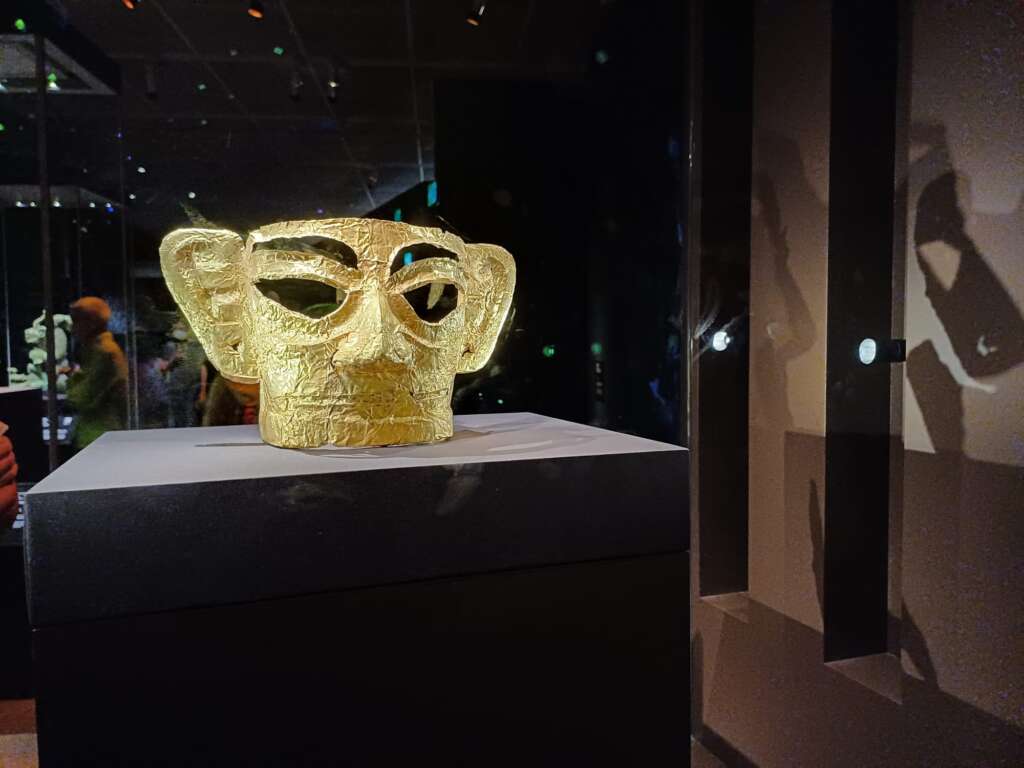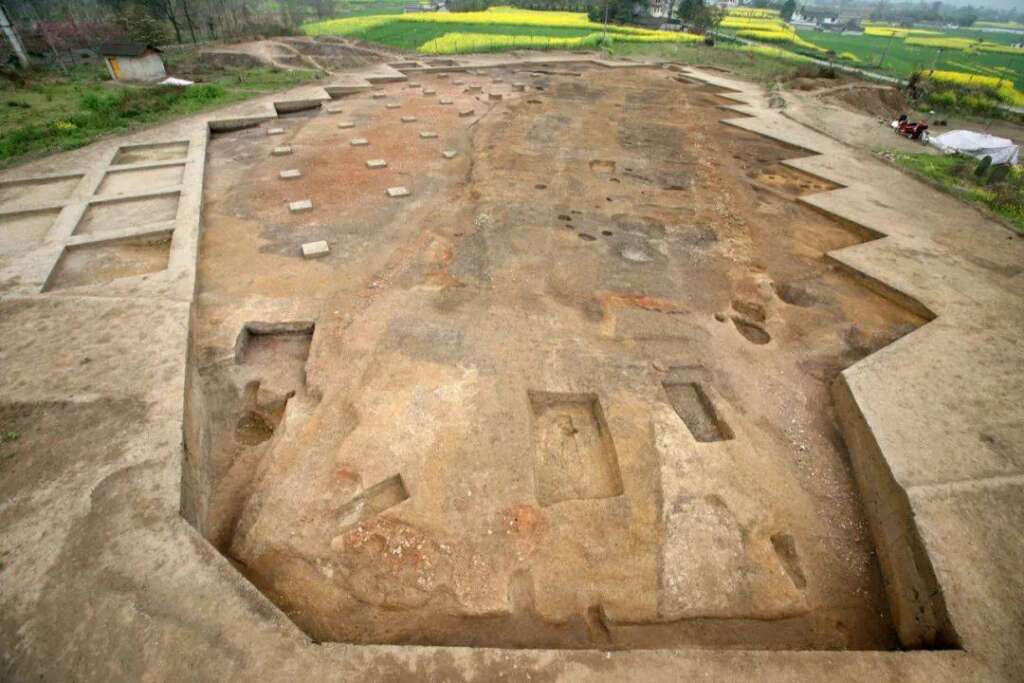THE UNEARTHING OF STRANGE and sometimes grotesque bronze artefacts at the Sanxingdui (三星堆) site in Sichuan has been regarded as one of the most astounding archaeological discoveries in China, shedding light on the mysterious ancient Shu civilization that flourished about several thousands of years ago.

The discovery of mythical relics in Sanxingdui, located in Guanghan city (廣漢市) in Chengdu, was dated back to about a century ago when a farmer uncovered hundreds of jade and stone artifacts while digging a trench in his home yard in 1920s.
The discovery piqued the curiosity of archaeologists, and American archaeologist David Graham, who was director of West China Union University Museum (華西協合大學博物館), and other Sichuan historians, started excavating the Sanxingdui site at that time.

From the 1950s, renowned Chinese archaeologist Feng Hanji (馮漢驥), who served as history professor of Sichuan University and director of the Sichuan Museum, recognised the importance of the Sanxingdui site and believed it was a remnant of the ancient Shu kingdom.
Professor Feng, who completed his PhD in anthropology at the University of Pennsylvania, led an in-depth excavation and mounted studies in Sanxingdui for more than 20 years.
Professor Feng believed that in the site of Chengdu Plain, there could be grand ancient sacrificial scenes. Sadly, Feng did not witness the unearthing of giant bronze face masks and human figurines in his lifetime. Still, his thoughts and studies had exerted significant influence on Chinese archaeologists involved in Sanxingdui’s excavation works.
A turning point came in 1986 when Chinese archaeologists discovered never-before-seen treasures, including giant bronze face masks and human figurines. With bulging eyes, protruding noses and big ears, the strange and otherworldly face masks and other relics have become synonymous with the concept of a “lost civilization” in ancient Shu kingdom.

At present, the Hong Kong Palace Museum has staged an exhibition to display over 120 Sanxingdui artefacts dating back some 2,600 to 4,500 years ago, in a show that will run until January next year (2024). Almost half of the relics – which come from latest excavations from 2020 to 2022 – are shown for the first time in the exhibition outside of Sichuan.
EXCAVATION OF RELICS
Chinese archaeologists unearthed the mythical artefacts in two pits in July 1986. These revealed that Shu people had the knowledge and skill to produce the grotesque bronze sculptures. Among them were a bronze tall standing figure and other mythical creatures, making Sanxingdui significant in its revelations of the Bronze Age civilization.

Between 2019 and 2020, archaeologists discovered six more pits in Sanxingdui site. Later they unearthed a staggeringly number of treasures including a giant bronze face masks and gold masks – which are displayed in Hong Kong Palace Museum.

Ancient Shu people’s awe for nature can be found in their relics and unearthed eye-shaped objects have been evidence of eye worship at that time.
Experts believe that ancient Shu people had the belief that shamans had the natural ability to communicate with deities using eye-shaped objects. Sun worship also flourished at that time and that was part of their understanding of cosmology.
PROTECTION OF SANXINGDUI ARTEFACTS
Chinese archaeologists have established an environmental monitoring system at the excavation sites. The temperature and humidity are controlled and so the artefacts do not deteriorate after being unearthed.

The archeological teams have also used top-notch technology to scan images of cultural relics on computers and used 3D printing to create replicas for study.
They have also developed silicone materials for wrapping and protecting each artefact, thereby curbing cultural relics from oxidising and getting mouldy due to air exposure.

Above all, the Sanxingdui site area is huge, spanning 12 square kilometres. There were solid city walls and architecture in the site, and only a small fraction of the site has been excavated.
So far no texts or inscriptions were found with the exotic-looking treasures and so archaeologists have had to try to piece together facts about the lost civilization of ancient Shu.

Professor Zhao Hao (趙昊) a Peking University archaeologist leading the excavation in Sanxingdui’s sacrificial pits, said the scale of Sanxingdui can be compared with the historic Yinxu ruin site (殷墟) in Henan’s Anyang (安陽) – the central city in the Shang Dynasty (BC1,300–1,046). The Yin ruins site has a palace, a residence and tomb remains, and it is rich in artefacts, weapons and oracle bones.
Professor Zhao said that archaeologists have only discovered a few sacrificial pits in Sanxingdui as it might take at least several generations to excavate the entire area and hopefully historical inscriptions can be found.

It is hoped that Chinese archaeologists can subsequently trace settlement and tomb zones as well as temples to have a vivid picture of life among ancient Shu people in near future.
Mystery has surrounded the lost civilization and fate of ancient Shu people who created the artefacts trove in Sanxingdui. The unearthed face masks, mythical figurines and creatures are intricate and imaginative and that certainly demonstrated the diversity and richness of Chinese civilization.
Image at the top by H.C. Lu
